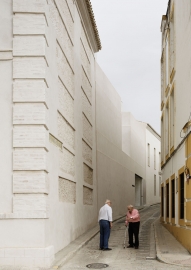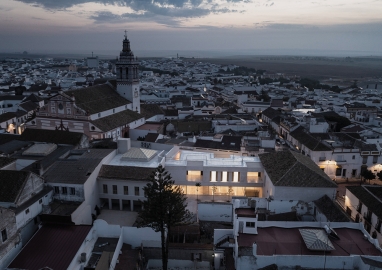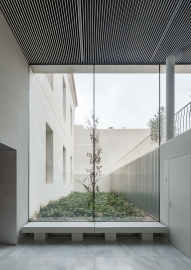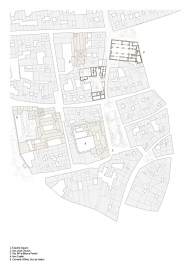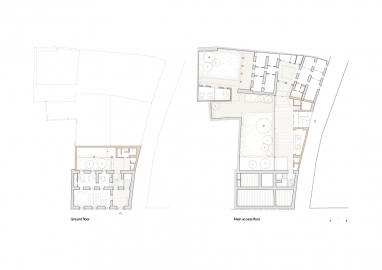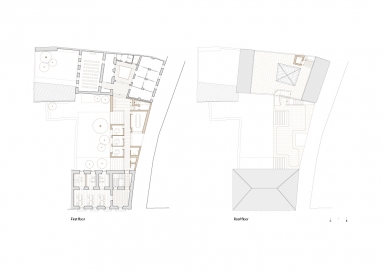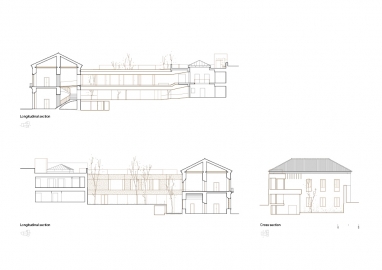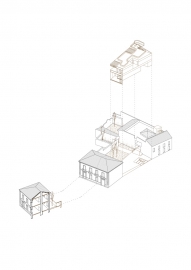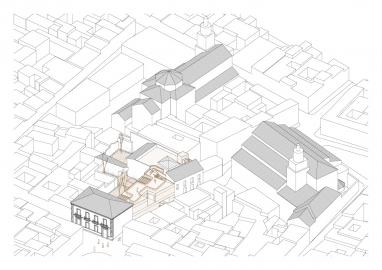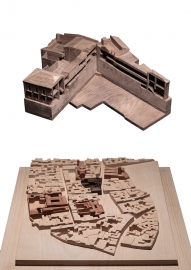Rehabilitation and Expansion of the Town Hall of Fuentes de Andalucía
As part of a homogeneous urban fabric, entirely heritage listed, a very tight-budget commission had to address the restoration of the neoclassical town hall, its connection with several more recent structures behind it, and the overall functional reorganization of the new resulting complex.
The arrangement of the program is presented with great clarity. Once you pass through this new entrance vestibule, a clear reception and service space is connected to a new outdoor public space that serves as an extension of the narrow access street.
This interior void allows for the recovery of the rear facade of the historic building and, consequently, its original detached condition. This ground floor public area adjusts the connection between its different levels and the street, linking the circulation throughout the ensemble.
On the other hand, the upper floor is arranged as a workspace, connecting on one side to the administrative area and on the other to the technical area. The impact on the historic building is minimized, where a sequence of courtyards and a double height space preserve the connection between them.
A pre-existing splendid neoclassical town hall stand on the town’s main public space. The intervention solves the new program by connecting the 18th-century building and the more recent municipal services building with a new volume that allows for a unified reading of the entire ensemble. After demolishing the less valuable constructions, the new building completes the block and presents itself to the street in a hermetic manner, without any visible order or openings revealing the public program it houses inside. In contrast to this massiveness, the building subtly steps up in section as it ascends to its roof, achieving a better interaction with the historic facade while also creating a sense of lightness that contrasts with its initial massiveness.
The public and open character of the Institution is reinforced by the proposal to access its rooftops. Situated within this protected environment, the proposal aimed to give this space a visitable character. Paths that connect with the tradition of bell towers and viewpoints of the town that rise at numerous points in the historic center to enjoy its surrounding agricultural landscape and the town itself.
The constructive honesty and ornamental austerity of Ventura Rodríguez's building led us to focus the intervention on recovering the elegant and sober character of its construction and spatial solutions.
The relationship between past and present is handled relying on the recovery of traditional techniques and materials to create an amalgam among the various parts and ages of the structure. Construction pathologies are addressed by restoring elements in the best state of preservation, respecting the legacy, and rediscovering its transformation.
Through the use of materials and construction techniques, a bridge is established between the past and the present. In this sense, a significant portion of the materiality of the ensemble relies on natural lime mortar coatings that, in the case of its facades, incorporate seeds and plant traces that evoke the historical relationship of the town with crops and agriculture.
Natural stones, woods, noble metals, and a vegetation treatment typical of our latitude complete the construction and serve as a reminder throughout the ensemble of the public character of this historic Institution.

